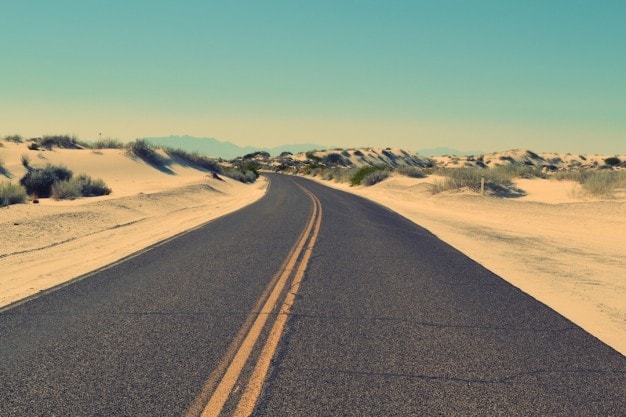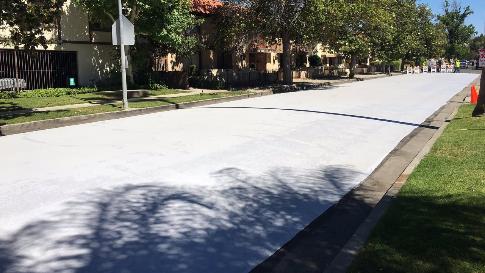Hello YouArmy,
Good Evening,
In General, Roads around the world in black, typically made from asphalt concrete. Asphalt made with a bituminous material* whose colour is also black. It uses asphalt cement as a binder to hold the aggregate (rocks and sand) together.
[*It consists of bitumen which is a black or dark coloured solid, types of sticky substances mainly made of high molecular weight hydrocarbons derived from the distillation of petroleum or natural asphalt]
In short, Asphalt is the main reason why our roads are black in colour, why aren’t they white or in other colours. So, today we will know about the asphalt advantages and disadvantages, its multiple uses, history and much more stuff. Excited to know? Here we go…
Ladies & Gentlemen, Meet Asphalt – responsible for the roads being black
Asphalt cement/concrete mix actually contains stones aggregate with a bituminous mixture. For these stones, the colour of the rock may turn into grey or brown colour over time. But again, soon, it turns into black with the friction of tires and the reaction to other chemicals present in the air. At the same time, it lightens the black asphalt.
That being said, the colour of any road/pavement can vary depending upon the colour of the aggregates used. For example, in bike lanes or in tennis courts use different aggregates. Similarly, it causes different colours.
First, Don’t mix up with tar and asphalt, let’s know the difference between them!
When you hear the word asphalt, you probably imagine the black tar material on roads and highways, right? But that’s not exactly correct. Well, Asphalt is the binding agent that kind of holds the rocks together and Asphalt comes from crude oil or petroleum, while tar comes from coal.

Then, Why Asphalt used?
- Asphalt is the most widely used material for pavements because of its drivability characteristics: smooth, cost-effective, quick and easy to construct, and most important it’s naturally available around the world.
- During high-temperature, black colour doesn’t reflect solar waves that help us to see roads clearly.
- At night, bright colours or colourful colours like red, blue can be seen easily in black colour but the vice versa is not generally comfortable or even not possible.
- For example, we can identify white strip drawn to the middle of the black road but we can’t identify black stripe on the white road. If though possible, it will look very blurry. In conclusion, any irregularity on road except black colour can easily be detected.
- Asphalt is having better grip with rubber than concrete.
- Scientifically, black colour has a tendency of absorbing almost all colours with little reflection. It’s very good for drivers safety. As reflecting more light/colour with little absorption may cause interference to drivers and trafficking in general and therefore will cause numerous road accidents. This point makes the very big difference in why the roads are black in colour, why aren’t in other colourful colours.
- Besides, black roads look less dirty than any other colours for having its black colour.
How can we get asphalt?
Today the most common way to get asphalt is through the oil refining process. As asphalt is basically the waste and heaviest product of materials in a barrel of oil, it’s got to the bottom of the barrel.
As in most cases, it can’t be used for energy, so it’s used as sticky stuff that holds materials especially sand and stones together. Combined with various amounts and types of rocks and other substances, it eventually becomes the mixture and then turns solid, on where we can drive our vehicle.
Multiple uses of Asphalt
Asphalt is a really flexible and versatile product. Although It’s most often associated with roads, asphalt is used for many purposes like parking lots, airport runways and racetracks, though roads account for its most extensive use. It can also be used to line fishponds and water reservoirs or for sporting purposes like tennis courts. Surprisingly, in general, asphalt includes a mixture of about 95% stone, sand and gravel, and just 5% is asphalt cement.
Read Also:
- Oriental cockroach – One of the biggest cockroaches in the world!
- Amazing 27 Soft foods to eat after wisdom Teeth Removal
- Pirates of the Caribbean: On Stranger Tides – Most Expensive Film Ever!
- Amazing Cashew Nuts Health Benefits, enough to make your day!
- What is the use of all function keys in the keyboard?
- Top 10 Richest Countries in the World 2020
Criticisms of Asphalt
Asphalt probably isn’t so eco-friendly – as we said before it comes from the waste or refining process of oil and petroleum which process has gone through pollution. Another negative side of it is as asphalt is black it has low reflectivity. Consequently, it has been determined to be a significant contributor to the Urban Heat Island (UHI) effect which causes much heat in a highway traffic jam especially on a hot summer day.
It also reported that asphalt produces toxic gases when melted during the paving and roofing. These toxic gases can lead to headache, skin rash, fatigue and even skin cancer.
But today how the use of Asphalt got modernised?
With a try of Recycling Efforts, the asphalt industry is actually doing innovating and environmentally friendly things. The recycling process has already been lighted fully in the USA for many years. In 2018, 82.2 million tons (74.5 million metric tons) of Reclaimed Asphalt Pavement (RAP) was put back into new mixes. That means every asphalt mix put down in the U.S. included about 21% RAP. [Source]
As far as asphalt’s contributions to the UHI, the Environmental Protection Agency states that conventional asphalt pavements can be modified with materials or treated after installation to raise reflectance. For decades, this has been sometimes implemented on surfaces like parking lots and highways.
To reduce the Urban Heat Island (UHI) effects and reflections porous asphalt and rubberized asphalt taking as examples for usage. And to reduce asphalt toxic gases/fumes, the administration recommends for controlling exposure can be done through high engineering controls with advanced technology, administrative actions and personal protective equipment.
For Greeners, here is some good news is that of the creation of Warm Mix Asphalt (WMA), which reduces the production temperature of asphalt at a plant. Similarly, it also reduces production costs, energy usage and time in both production and road surfacing¹.
Then, Why not other colours except for black?

As we said earlier, roads are black because of asphalt and its availability around the world. But when comes to make the roads white in colour or in other colours, the cost of making roads will be so high as the availability of that elements are very less. As we know the cost of any product depends on its availability and it’s disproportionate to each other.
Besides, the white coloured road will reflect all lights to drivers which may cause a serious accident due to the disruption of light. And also colourful roads will look ugly and dirty as roads become dirty and unhealthy over time.
Then, you will probably ask, don’t black coloured roads become dirty like other colours? Yes, of course, it will. But as the colour of dirt is generally black and the road is also black, the roads will look very much less ugly and dirty than any other colours.
Lastly, The History of Asphalt!
All the talk of oil refining, you may think asphalt sound like a relatively modern invention. But surprisingly, the first reported use of asphalt was made on a road in Babylon in 615 B.C.E.
Later, asphalt and burned brick were used to pave a procession street during the reign of King Nabopolassar. Using it as a binder on roads became more common in the 1800s. From then, people started to add hot tar (can be said as a kind of asphalt) to reduce dust and maintenance on roads. This method also improved driving conditions. Entrepreneurs, businessman, inventors soon filed patents for different mixtures of asphalt, which appeared under a variety of names. As the industry grew, cities began requiring more.
In the USA, bituminous mixtures (asphalt concrete) first appeared in the 1860s, and the first “true asphalt pavement” was laid in Newark in 1870 by Edmund J. DeSmedt, according to NAPA. In 1956, Finally, the Federal-Aid Highway Act help to create the 48,876-mile (78,658-kilometer) Interstate System in the USA. Then what else? We all then jumped into it from that day to today!
So, hope you enjoyed this post. Thanks for reading! See you soon 😉
Related:
- Why does milk overflow when boiled while water doesn’t?
- Why Dog’s Tail is not Straight? | Why it’s bent?
- How do fish sleep: Something We Don’t Know!
- Can we cry underwater and is it really possible???
- Why cat scared of cucumber? | Battle – Cucumber VS Cat
Read Also:
- Top 10 strongest currencies in the world
- Sea Moss: THE NEXT GENERATION of FOOD | Sea Moss Health Benefits
- How many types of Insurance are there?
- 25+ Amazing Happy Halloween Images | New Collection!
- How does a matchstick catch fire? | The science behind it
- Teacher’s Day 2020: 50+ Awesome – Amazing Teachers Day Images!!
- What is the meaning of Yellow colour???
- How Amphan Cyclone is named? | Amphan Cyclone Name

